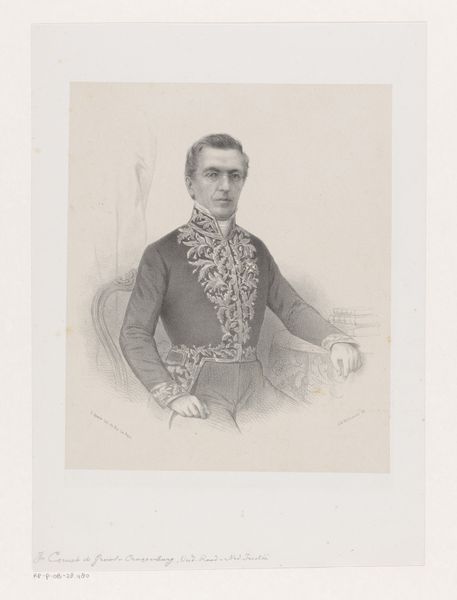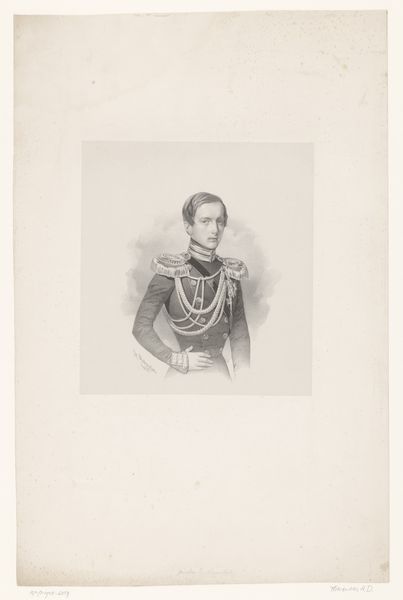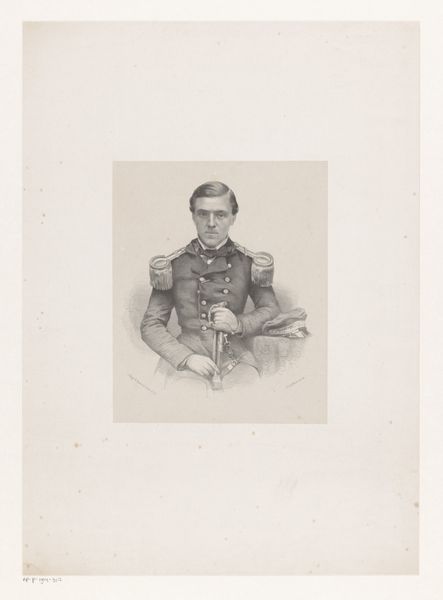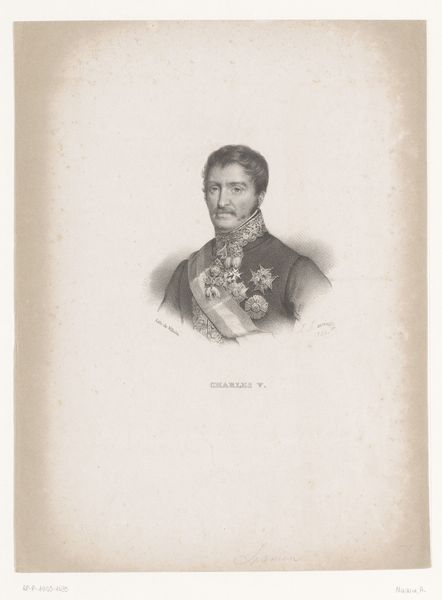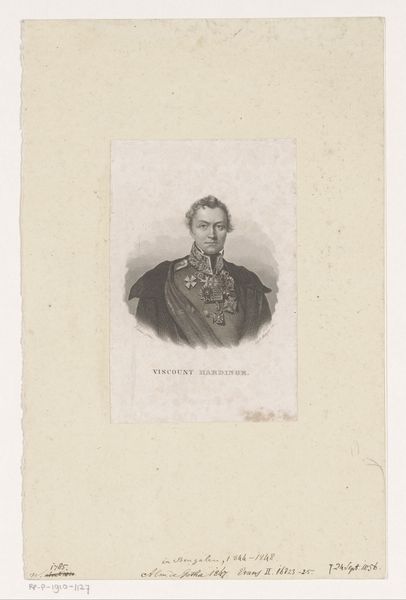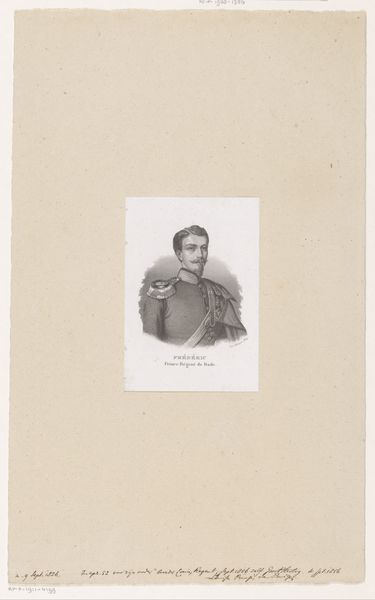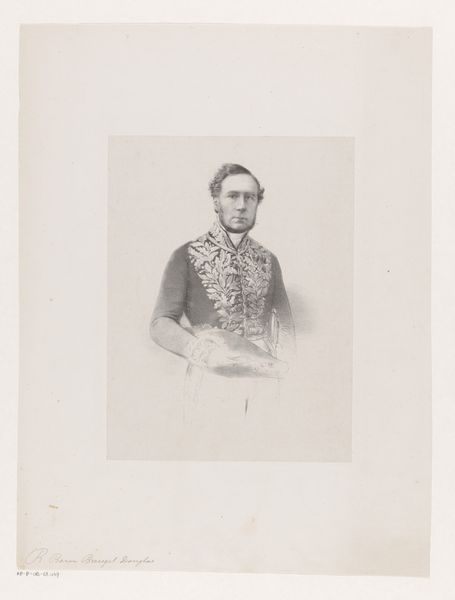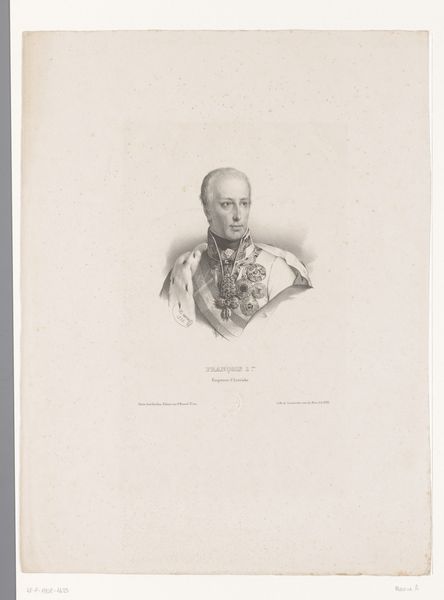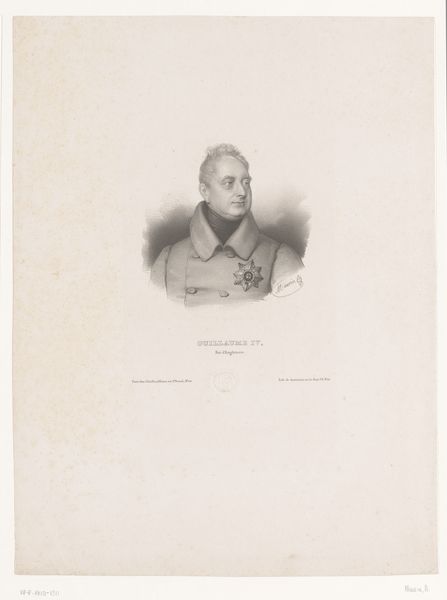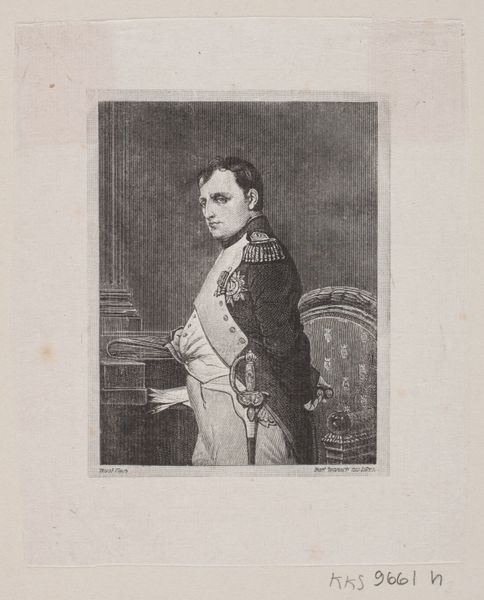
print, engraving
#
portrait
#
neoclacissism
# print
#
history-painting
#
academic-art
#
engraving
Dimensions: height 359 mm, width 265 mm
Copyright: Rijks Museum: Open Domain
Curator: Hmm, an almost ghostly presence, isn't it? Like a figure emerging from a forgotten corner of history. So austere and pale! Editor: That's interesting! We're looking at an engraving titled "Portret van Nicolaas I Pavlovitsj (tsaar van Rusland)" which translates to "Portrait of Nicholas I Pavlovich (Tsar of Russia)," dating back to 1832. It’s the work of Antoine Maurin. It’s striking how such an intimate medium like print can portray someone so powerful. Curator: Well, "powerful" certainly comes across. Though he appears a little melancholic to me, or maybe world-weary? All those medals…they must weigh him down! There is such stillness about his gaze. Do you think he saw the seeds of revolution brewing in Russia? Editor: Considering the political climate of Europe at the time, absolutely! Nicholas I ruled during a period of immense social and political upheaval. There were uprisings against autocracy everywhere and burgeoning intellectual movements challenging traditional authority. This print really acts as a visual representation of the Tsar himself: rigidly formal, imposing, but also fragile when faced with inevitable shifts in the world. Curator: Yes! Fragile! I can see it now! I thought I sensed a tremor. It makes me wonder, what did Antoine Maurin really think of him? To be tasked with capturing someone's image is to invite intimacy with that soul. I would’ve loved to rifle through his thoughts! Editor: As an engraving, this piece inherently connects to a broader network of dissemination. Portraits like this served as tools for constructing and solidifying imperial power and political propaganda. By circulating an image of the Tsar that was both dignified and seemingly approachable, they aimed to reinforce loyalty and maintain order, even during times of turmoil. Curator: I suppose it’s a trick of light and dark, the grey hues fooling you to believe there’s true depth where there isn’t. And the scale of it, this small impression of grandiosity. Isn’t it remarkable how art can be both grand and…so contained? I'm feeling quite ambivalent all of a sudden. Editor: It is that contradiction, I believe, that truly captures the complex history behind this representation of Nicholas I, and, indeed, portraits in general. A lasting echo of shifting dynamics. Curator: Indeed.
Comments
No comments
Be the first to comment and join the conversation on the ultimate creative platform.
